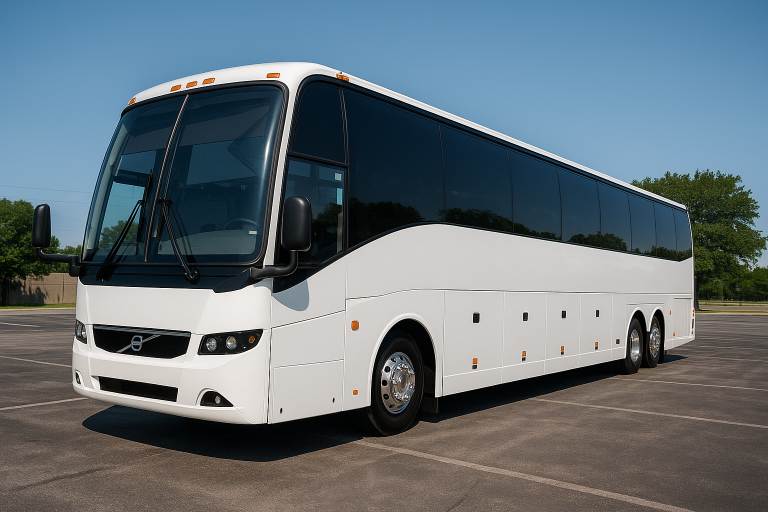- Charter Bus Rental Albany /
- Blog /
- How to Stop Sickness on a Albany Charter Bus
How to Stop Sickness on a Albany Charter Bus
If you’re one of the millions who get queasy on road trips, bus tours or even short shuttles, you know motion sickness can turn an exciting journey into misery. The good news: with smart planning and a few proven strategies, you can reduce or even prevent symptoms like nausea, dizziness, and fatigue while riding on a charter bus in Albany, New York. Whether you’re headed to Times Union Center for a concert, shuttling between SUNY Albany campuses, or taking a long-distance trip down the Thruway, here’s how to keep your stomach settled and your group happy.

Quick Answer
Motion sickness happens when your brain receives conflicting signals from your eyes (which see movement) and your inner ear (which senses balance). The result? Nausea, cold sweats, headaches, and sometimes vomiting. In buses, this often strikes when reading, looking at screens, or sitting in the rear where the ride is bumpiest. Children ages 2-12 are most vulnerable, but adults can suffer too—especially if they have migraines or anxiety.
What Is Motion Sickness?
Motion sickness is a common condition that occurs when there’s a disconnect between what your eyes see and what your body feels. On a moving vehicle like a charter bus, your inner ear detects motion, but if you’re focused on a book, phone, or anything inside the bus, your eyes tell your brain you’re stationary. This sensory mismatch triggers the symptoms we associate with motion sickness.
What Causes Motion Sickness?
Several factors contribute to motion sickness, including genetics, age, and individual sensitivity. Common triggers include:
- Sitting in the back of the bus where there’s more movement
- Reading or using electronic devices
- Strong odors from food or perfumes
- Poor ventilation or stuffy environments
- Anxiety or anticipation of getting sick
Understanding these triggers can help you take proactive steps to minimize discomfort during your Albany charter bus journey.
6 Tips to Prevent Motion Sickness
While it’s not always possible to eliminate motion sickness entirely, following these six tips can significantly reduce your chances of feeling ill on your next charter bus trip in Albany:
Choose the Right Seat
Where you sit matters. Opt for a seat near the front of the bus, ideally over the wheels. This area experiences less motion compared to the back. Facing forward and keeping your gaze fixed on the road or distant scenery helps align your visual and vestibular senses, reducing the likelihood of nausea. If possible, avoid seats facing backward or those directly above the rear axle.
Keep Your Head Still and Rested
Sudden head movements can exacerbate motion sickness. Recline your seat slightly and rest your head against the headrest to stabilize it. Some travelers find relief by using a neck pillow or rolled-up jacket for extra support. If you start to feel unwell, close your eyes and take slow, deep breaths to calm your nervous system.
Limit Visual Distractions
Avoid activities that require close focus, such as reading books, browsing your phone, or working on a laptop. These tasks increase the sensory conflict between your eyes and inner ear. Instead, listen to music, podcasts, or audiobooks to distract yourself without straining your vision. If you must use a device, take frequent breaks to look outside and reorient your senses.
Snack Wisely and Stay Hydrated
Your diet before and during the trip can influence your susceptibility to motion sickness. Eat light, bland foods like crackers, toast, or bananas. Avoid greasy, spicy, or heavy meals that can upset your stomach. Ginger is a natural anti-nausea remedy—consider bringing ginger chews, tea, or ginger ale. Sip water or electrolyte drinks regularly, but steer clear of alcohol and excessive caffeine.
Use Fresh Air and Ventilation
Stuffy, poorly ventilated spaces can make nausea worse. Take advantage of the bus’s air conditioning or open windows slightly to let in fresh air. Position yourself near an overhead vent if possible. If strong odors from food or other passengers bother you, carry a small bottle of peppermint oil or scented handkerchief to mask unpleasant smells.
Try Over-the-Counter Remedies
If you’re prone to severe motion sickness, consider preventive medications. Antihistamines like dimenhydrinate (Dramamine) or meclizine (Bonine) are effective when taken 30-60 minutes before travel. Be aware that some may cause drowsiness. Non-drug options include acupressure wristbands (Sea-Bands) that target the P6 point on your wrist, which some users find helpful. Always consult your doctor before starting new medication, especially if you have underlying health conditions.
With these strategies, you can significantly reduce the risk of motion sickness and ensure a comfortable ride for everyone on your Albany charter bus. Remember, prevention is key—address symptoms early and adjust your routine as needed. For more travel tips or to book a reliable charter bus for your next group event, call Charter Bus Rental Albany at 838-839-6660. Our team is available 24/7 to help you plan the perfect trip across New York State.
Albany Charter Bus Packing and Carry-On Guide
Complete Guide To What Buses Are Available in Albany, New York
The Best Snacks to Bring on a Albany Charter Bus Ride
How Many Seats are on a Albany Charter Bus?
Top 10 Groups in Albany, New York That Can Benefit from Long-Term Charter Bus Rentals
Ready to Book a Bus?
838-839-6660Agents available 24/7
